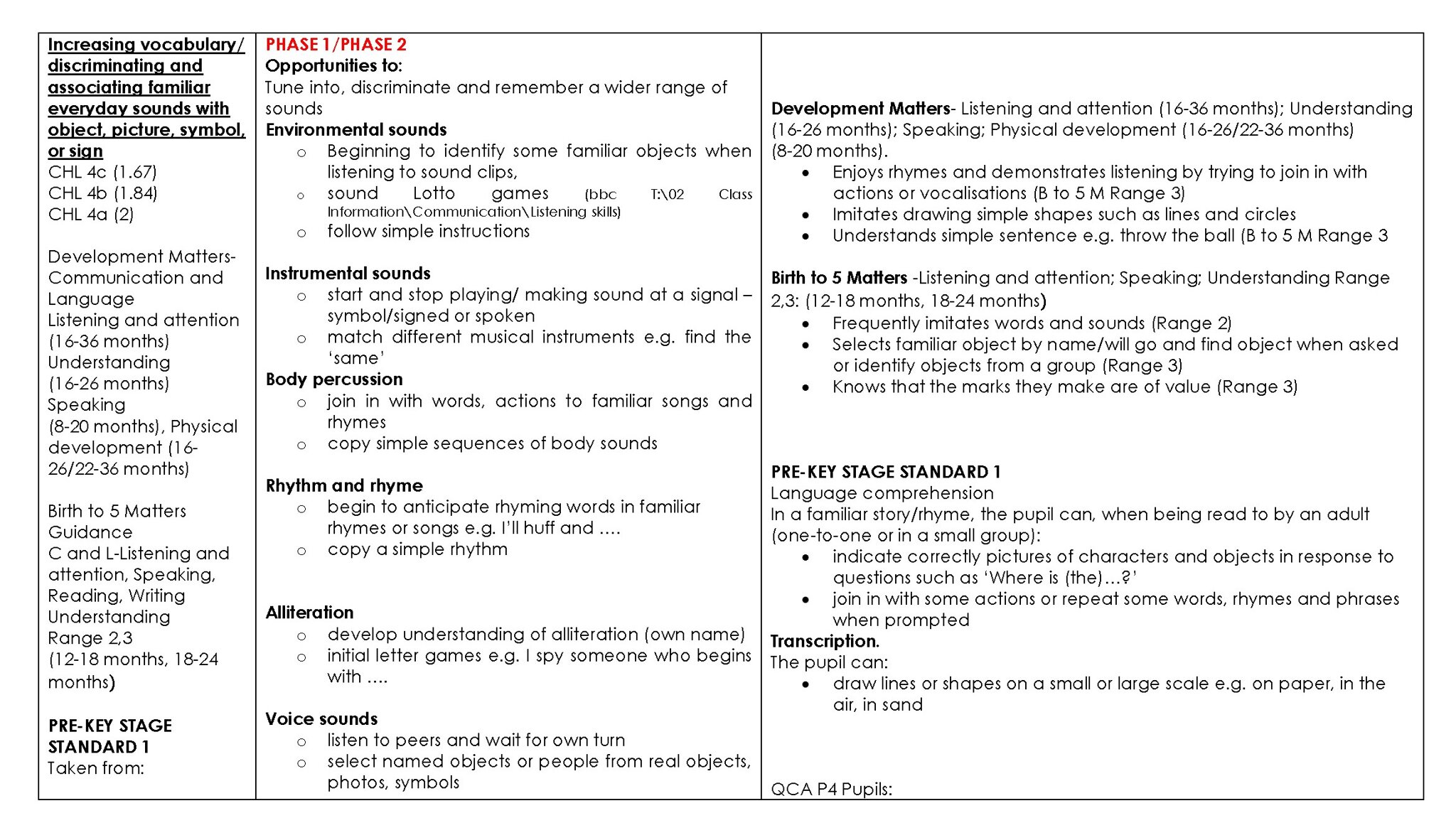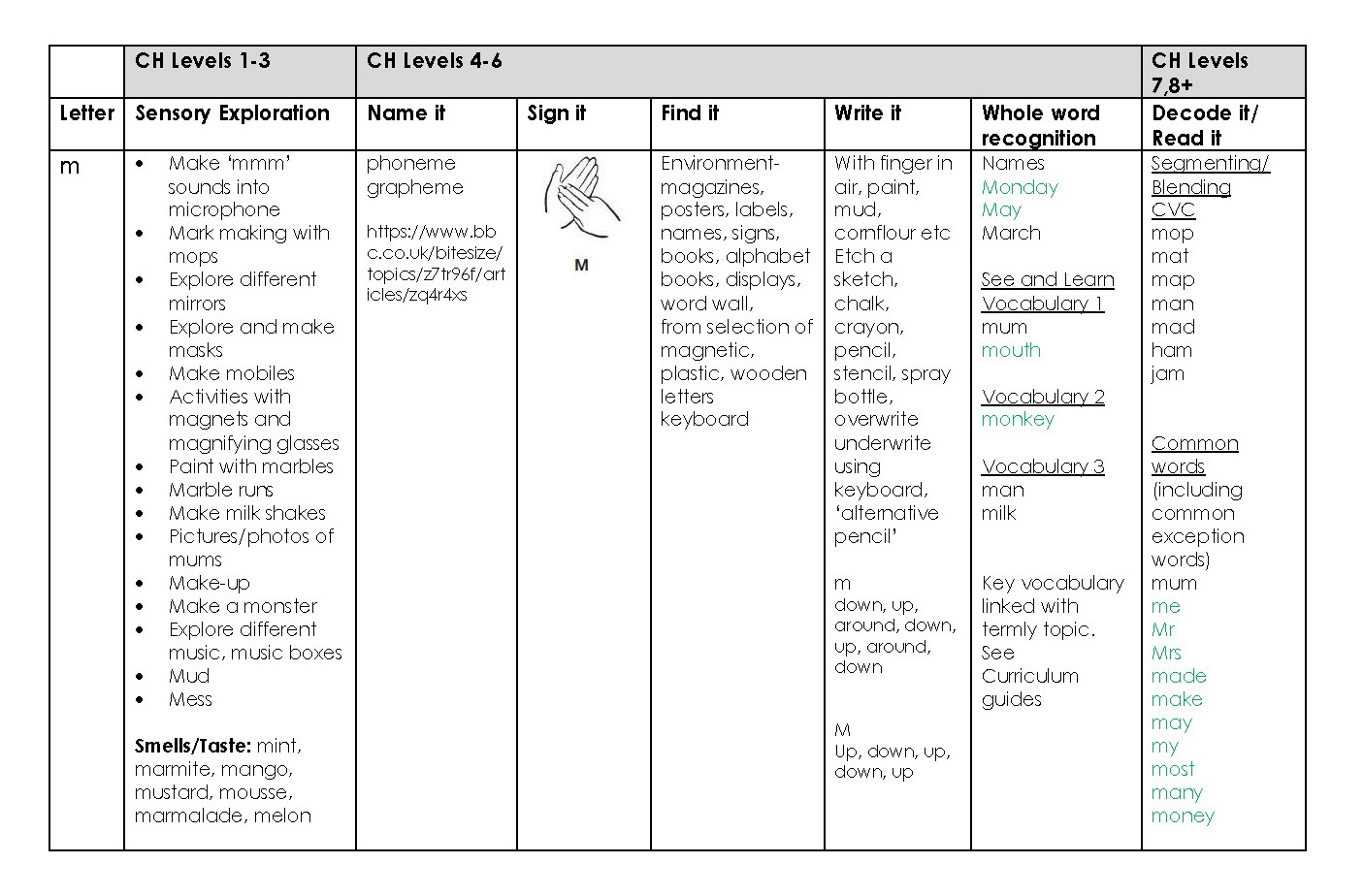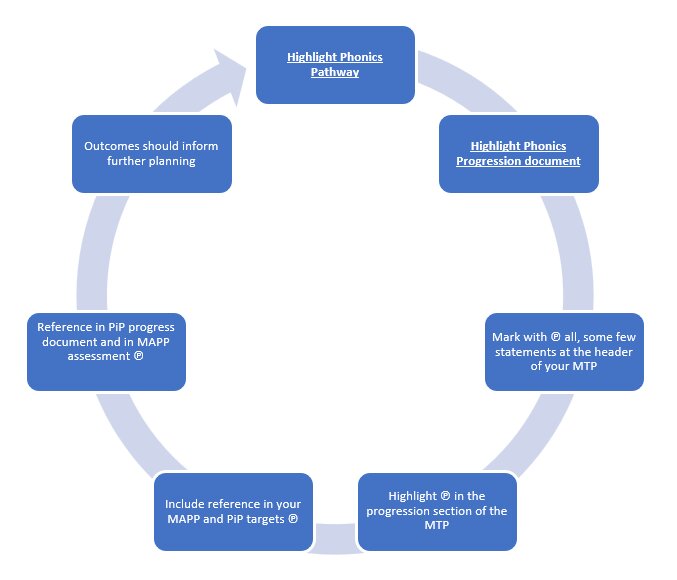Systematic Phonics within a hybrid approach to Reading and Writing
Letter of the Week - Click Here to view
Rationale:
At Castle Hill school we follow a ‘hybrid approach’ to teaching reading and writing, to accommodate the individual needs of pupils. In line with the latest research our focus is on ‘balanced instruction’, combining a systematic approach to teaching phonics with whole word recognition, use of visuals and symbols and the development of comprehension skills.
(source: Wyse, D., & Bradbury,A. (2022) Reading Wars or reading reconciliation? A critical examination of robust research evidence, curriculum policy and teachers’ practices for teaching phonics and reading. Review of Education, 10, e3314. Reading wars or reading reconciliation? A critical examination of robust research evidence, curriculum policy and teachers' practices for teaching phonics and reading (wiley.com))
For reading to be possible children need to be able to:
- Hear, recognize, identify, differentiate between, process, remember and recall (in a ‘thinking voice’ in their head) auditory information, specifically speech sounds or phonemes
- understand that visual figures or symbols can ‘stand for’ or represent something
- see, recognise, identify, differentiate between, process, remember and recall visual information, specifically letter forms.
Intent. We have high aspirations for all our students.
Fundamental phonics work is included in the learning process so that the students are prepared for when (and if) they are able to access a semi-formal approach to reading instruction. Part of this process is applied through incidental phonics including focusing on words that hold great meaning for the child e.g. their own name, their favourite toy or a piece of equipment they like to use.
Students are prepared for phonological awareness through the application of our Phonics Progression Document and Phonics Pathway. The Phonics Pathway supports learning within the Reading, Writing, Speaking and Listening Pathways
We begin at Phase 1 including the application of:
- Environmental sounds
- Instrumental sounds
- Body percussion
- Rhythm and rhyme
- Alliteration
- Voice Sounds
We build on this knowledge through phonemic awareness with the application of Phases 2 to 5.
Phase 2 and 3 phonemes are covered sequentially within the pathway using the most intuitive sounds for our unique cohort, beginning with the phoneme Mm. Decodable books provide pupils with opportunities to apply their phonics skills.
Pathway example:
Progression document example:
Formation of graphemes
When guiding the formation of graphemes, vocabulary is kept as simple as possible.
Letter formation vocabulary is given while the student is supported in carrying out the movements, with the kinaesthetic action adding context to the vocabulary.
Letter formation vocabulary: up, down, across, around, dot.
E.g. formation of letter a: “around, up, down”
formation of letter m: “down, up, around, down, up, around, down”
Implementation of phonics in the planning and assessment process:
During 2022-23 our lesson study focus groups were:
- Phonics pathway group
- Music, rhythm and sound group (PMLD/SLD/SLD+)
- Inclusive literacy best practice group (PMLD)
- Bridge best practice group (PMLD to SLD)
- Bespoke literature group (SLD/SLD+)
- Stage 1,2,3 phonics best practice group
Our lesson study groups for 2023-24 are :
- Rhythm and Rhyme group
- Emergent reading group inc Symbols, Photos, Communication books and ideas for impact
- Phonological awareness through Intensive Interaction
- AAC and Advanced reader routes for learning (including Grid 3)
- OOR/touch cues development group
This will ensure legacy from the lessons learnt last year and continued pedagogical development
Impact will be evidenced through:
- Assessment outcomes in reading against Summer 2022
- Observation and peer observation outcomes; autumn, spring and summer
- Subject lead case studies.


